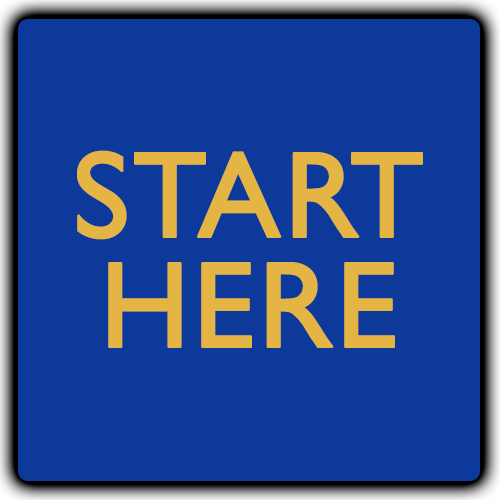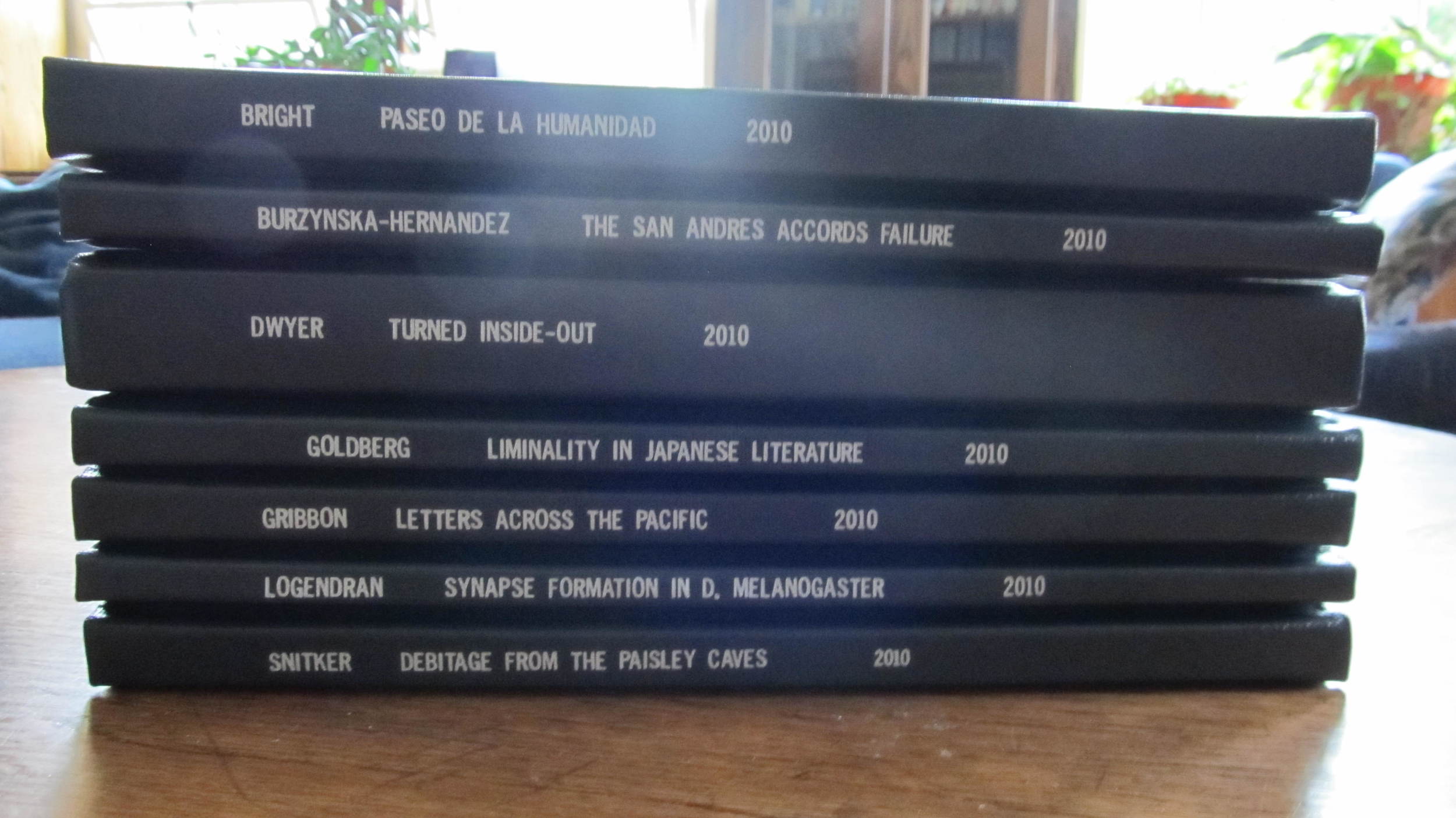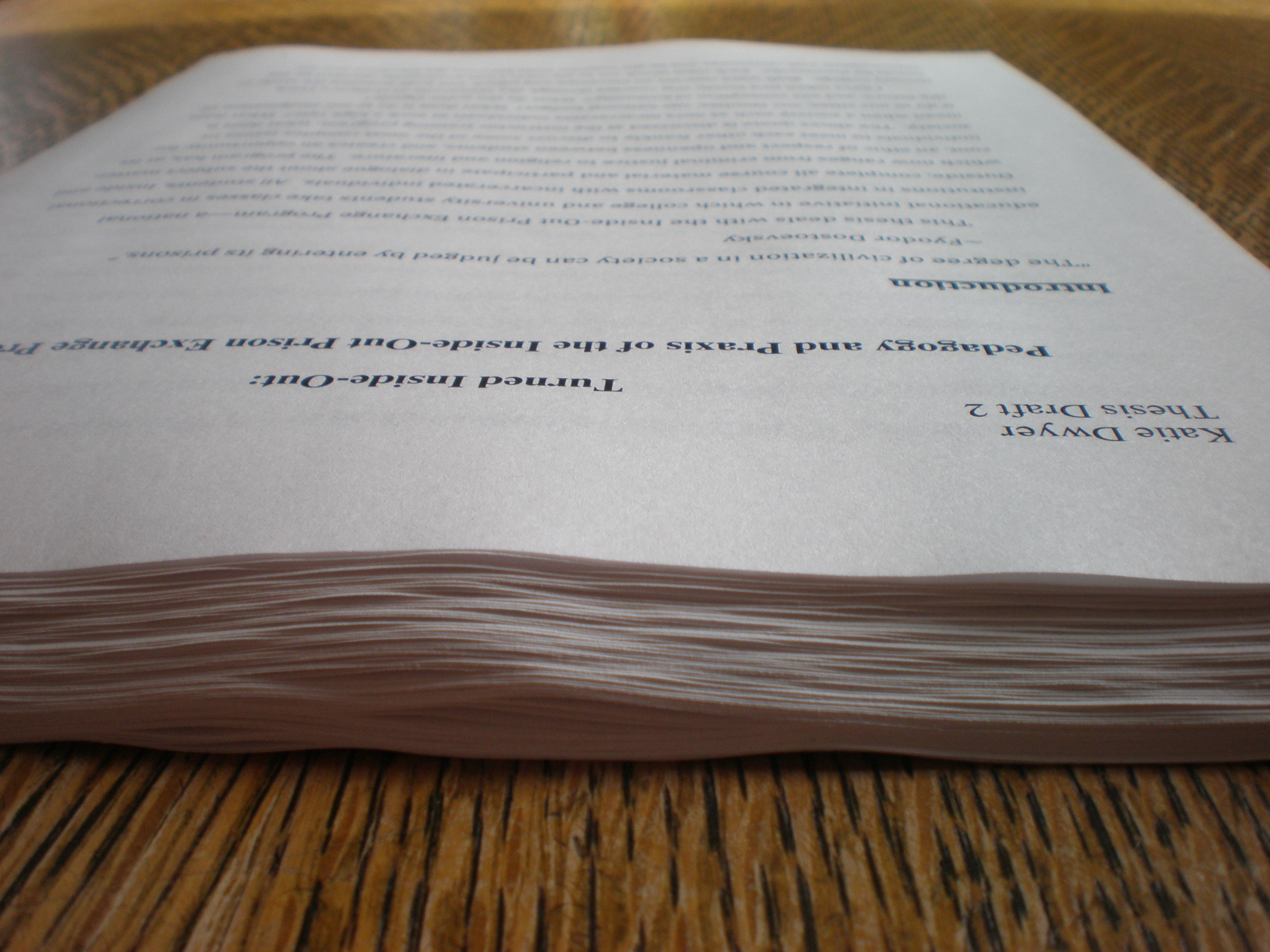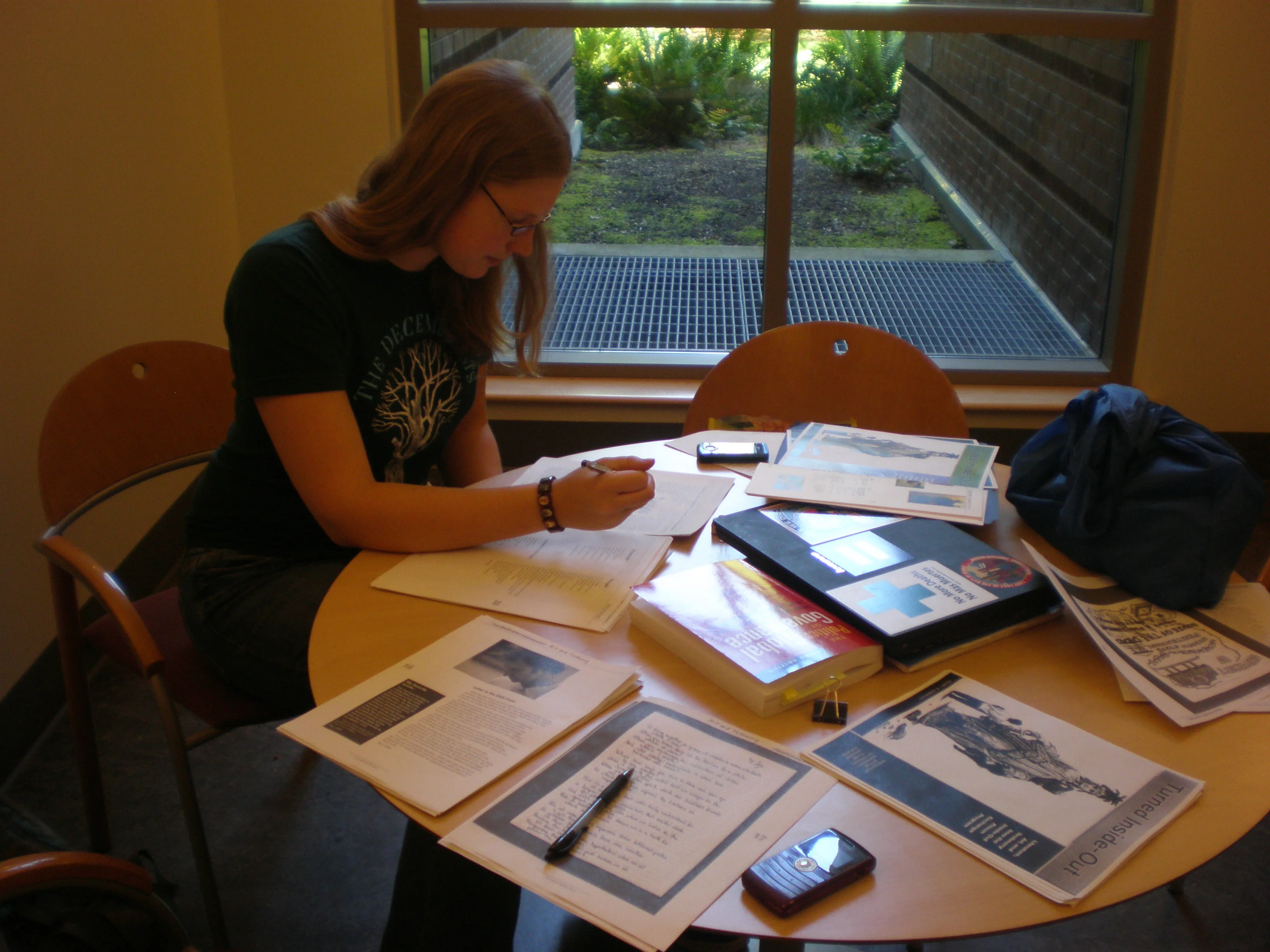Study Tips: Taking Notes on Books
/I’m a big believer of writing in books. When you’re faced with a gigantic pile of assigned reading material, and you know for a fact that you’ll be called upon in a couple of months to remember what you read this Thursday evening when you wanted to be asleep… believe me, a few well-placed margin notes can make a big difference.
There is a ton of advice out there for taking notes. I plan to write some other posts in the future (including my true secret to success: taking notes from .pdf or other computer doc reading assignments). There is no 100% right way to take notes on your reading. Not everyone learns the same way, remembers the same way, or gets excited about the same kind of material.
So here I’m sharing what has been the most effective method for me. It’s worked pretty darn well so far, and has meant I can still quickly find important passages in books I read five or more years ago.
A couple of thoughts before I get started
- DO NOT WRITE IN LIBRARY BOOKS. Do not, do not, do not. If you are using library books for your course materials (which I recommend instead of buying all assigned texts whenever possible), find an alternative note-taking method. One that works well for me is small sticky tabs, combined with written notes (with page numbers) in a notebook to keep track of what was important where.
- DON’T WORRY about what you’re writing. My friend Miles talks about “dialoging with the text” when he writes in the margins—having a conversation with the book and responding with what comes to mind as he’s reading. Don’t worry that what you write down might not be brilliant or insightful. Write down what will help you remember and push your understanding forward. No one ever has to see what you’ve written. I used to feel ridiculously anxious about writing in books, mostly because I was afraid I would spell something wrong. The book doesn’t care. The notes are there for you.
Taking Notes from Books
Here’s my system:
- I underline sentences and short passages that catch my eye.
- If the underlined passage is of key importance or introduces a new idea, I write the topic in the margin of the book. This can be a couple of quick key words: a character’s name, the introduction of a new theory, the analysis of cultural phenomena.
- If the important passage is longer than a few lines, I use a vertical line or a bracket in the margin to catch my eye.
- If a page has truly critical information, or just ideas that have me nodding along and thinking ‘YES!’ I put an exclamation mark on the upper corner of the page.
And that’s it!
Depending on the type of text and the way I plan to use it in the future, these notes will help me search out key ideas and passages to return to. I recently re-read Paulo Freire’s Pedagogy of the Oppressed, which is a key text in transformative education theory and in social justice theory. Since I had read this copy of the book before, it still had some of my old notes in it and it was fun to see how time has changed what I note down, even in my "serious" reading for fun. With my note-taking system, I can now quickly track down ideas that will be helpful in later writing projects. I remember scribbling down the first time praxis is introduced, or Freire’s discussion of the difference between activism and revolution (if you’re wondering, it’s critical reflection and dialogue, and Freire is all about dialogue and revolution).
If these notes were in a novel, I would be careful to mark the introduction of new characters, key plot points, themes, and any particular moments when the author’s thoughts shine through the text.
I also use the syllabus to help guide my reading and note-taking. If the syllabus lays out three major themes for the week, you can be sure I’m looking for those themes and underlining them in my text as I read through the first time. When these ideas come up in class, I can jump directly to the right spot, which is particularly helpful when it comes time to write final essays or take final exams.
So these are the basics:
- Underline
- Note the topic
- Use vertical lines for long passages
- Top corner exclamation marks for passages I love (or are particularly important)
Variations and add-ons
Once this basic note-taking has taken place, there are several ways to make it work even more efficiently for your retention and future use of the book.
In-class discussion
If the text is discussed in detail in class, use a different color pen or pencil to mark those passages which the instructor or your classmates found to be particularly relevant. Even if you take most of your notes separately, it will help to have a record of where their analysis matches up with yours, and where their idea of key passages differs. By using a different color, you preserve your original thoughts while also adding and deepening your interaction with the text.
Typing out quotes
This is particularly useful for library books, and will be explored in a later blog post. But if there are passages or quotes that you know will be useful to you later on, go ahead and create a typed and permanent record for yourself. Note page numbers of all typed quotes.
Using Sticky Notes
If a book is going to be used and referenced multiple times, whether in class discussions or in future essays, it can be particularly helpful to use sticky notes to mark key passages or frequently-referenced ideas of events. I use narrow sticky notes in two ways: at the top of the book to mark chapters, and along the sides to “bookmark” essential ideas. This requires very little extra time, but can help you turn quickly to the part of the book you need.
One thing I love about this kind of detailed note taking is that it can save enormous amounts of work later on. If you know a book in depth, and can quickly find quotes to support your ideas or arguments, you will be well on your way to having a useful source document both for your current class and in the longer run (including a future thesis project).
Another way this method is helpful is that if you have multiple texts assigned for a class, you can prioritize and focus on a single text for this level of attention and analysis. If you are discussing four books in a single class session, obviously it will not be possible to read every book in its entirety every time. However, if you combine this note taking with skimming the other texts, you will likely gain a clear and useful insight into the full range of ideas being discussed. Obviously this will depend somewhat on the course of study. But regardless of discipline, being able to recall and return to key ideas in your assigned reading will help you enormously in your education.
Best of luck with those reading assignments!
How do you handle note-taking? I'm honestly curious if this "system" is simply standard, of if I'm onto something special. Also, if you liked this article, please check out "When You Can't Finish the Reading," "Reading for Fun as a College Student," "Study Strategies: The Study Buddy," and "The 5 Books All Students Should Read BEFORE Freshman Year."






















